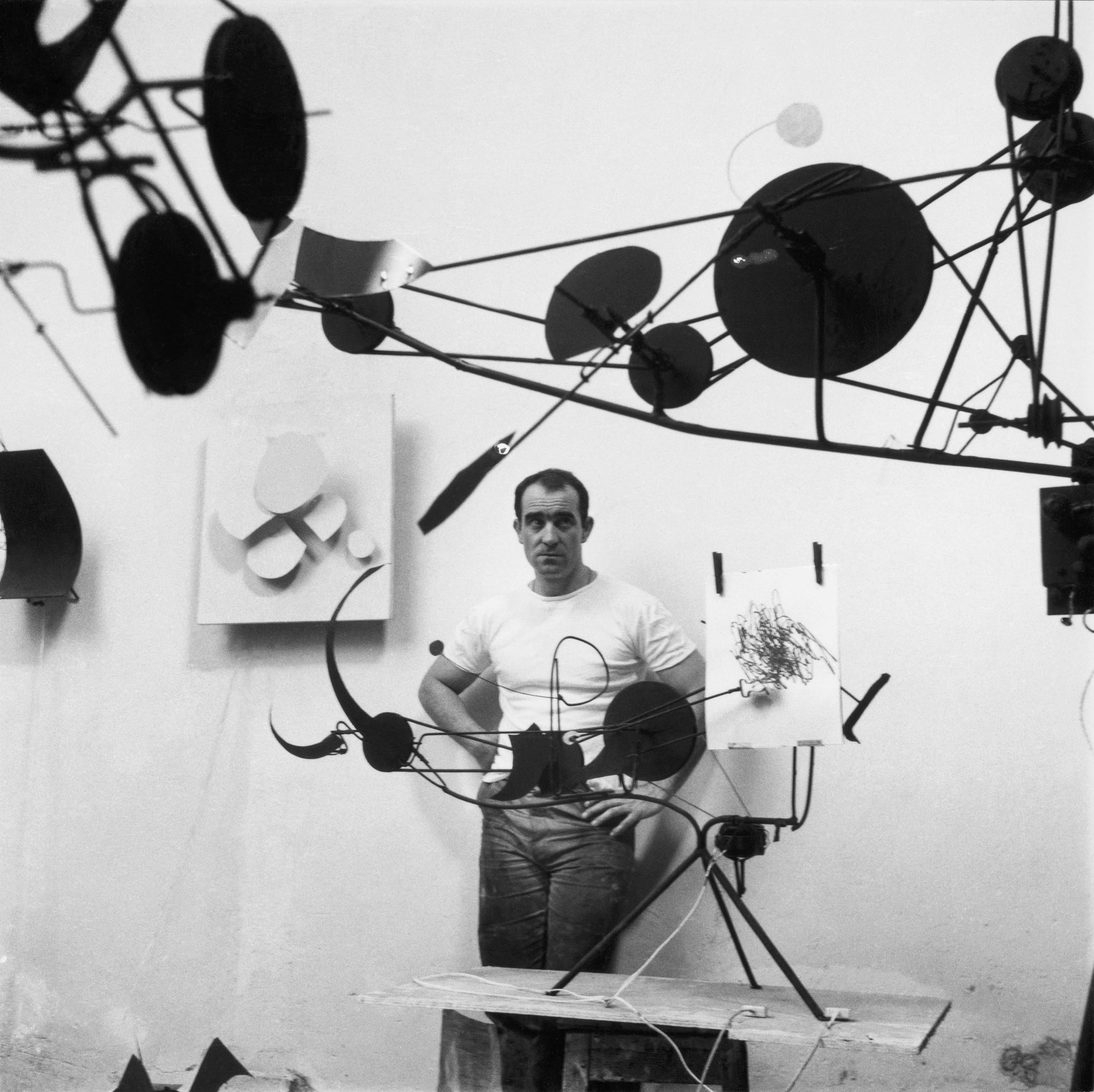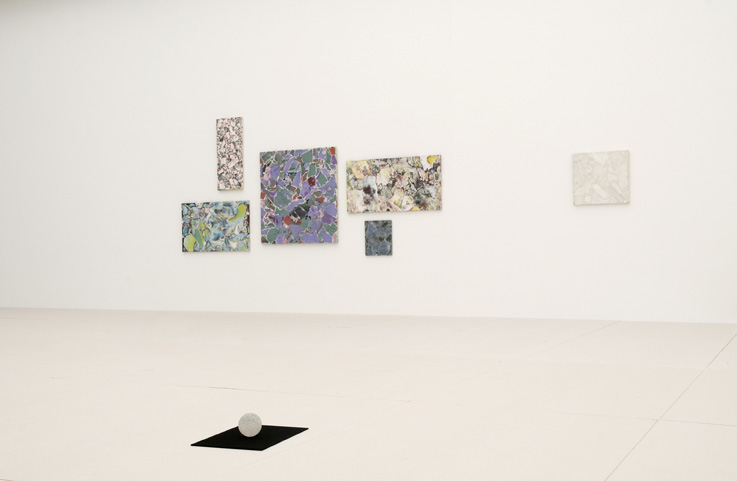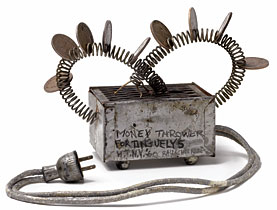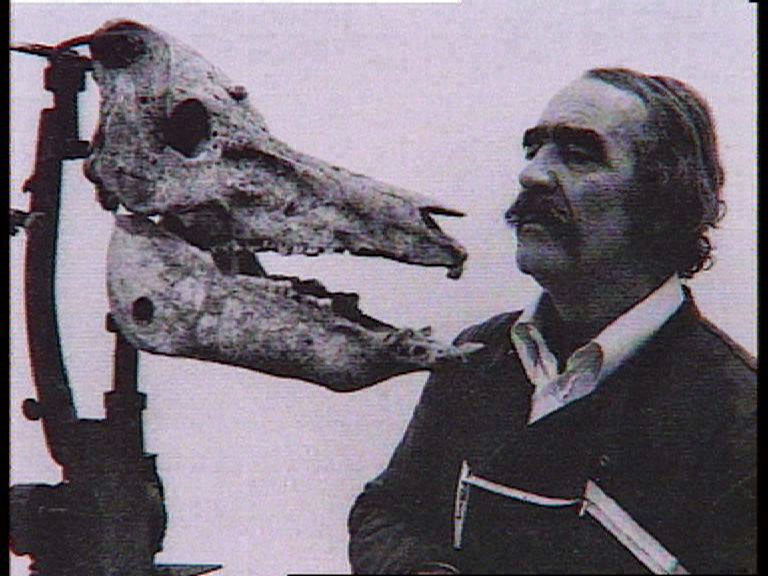A fresh look at Tinguely

Jean Tinguely is remembered for his entertaining mechanical sculptures, but there was much more to him than ingenious contraptions made from junk. A new exhibition highlights his role as one of the most original artists of his time.
For over 30 years, the Swiss artist was an influential figure in the European avant-garde. Tinguely@Tinguely, on at Basel’s Museum Tinguely, also looks at his role as an agitator and a poet through the revamping of a collection started 16 years ago, and to which major pieces and biographical elements have been added over time.
“We need to revisit Tinguely’s work to rediscover how inventive he was,” Roland Wetzel, the director of the Tinguely Museum told swissinfo.ch on opening day.
The new display occupies all four floors of the Mario Botta-designed museum and will stay in place until September 2013.
After being greeted in the hall by three of Tinguely’s spectacular and monumental later works, the visitor is swept up an inclined gallery that dominates the Rhine below.
On the long stretch of wall a pictorial biography maps out the artist’s life, interspersed with some of the catchphrases that reveal his cynical humour (see sidebar).
The exhibition spaces are arranged chronologically, allowing a better understanding of the artist’s evolution and the successive phases in his work.
Starting with Tinguely’s 1954 kinetic paintings (wall hangings with abstract shapes that twirl and glide), we then discover the 1959 Meta-matic drawing machines that invite visitors to make their own drawings by equipping the jiggling arm with a felt-pen and paper. By involving onlookers in his kinetic pieces, Tinguely was allowing anyone to become an artist and was transforming our relationship to art.
Robust junkyard assemblages followed, which in turn gave way between 1961 and 1963 to the feathery Baluba sculptures that perform wild and provocative dances, and finally to his mega sculptures.
The different sides of Tinguely appear: playful, reflective, aggressive, politically indignant, sexually charged, and poetic.
Pivotal role
Especially revealing are the drawings, most of them illustrated letters to his friends. They became more colourful, teasing and even provocative as the years passed.
“It was as if Tinguely outsourced his life,” explained Wetzel, adding: “We have many more, but some are too intimate to show.”
The purpose of the exhibition, he continued, is also to emphasise Tinguely’s pivotal role in performance art in the 1950s and 1960s avant-garde. Several television screens air the happenings that he orchestrated with fellow artists.
Yves Klein of the famous Klein blue and the American Pop artist, Robert Rauschenberg were two of his many accomplices. He also formed one of the 20th century’s most colourful couples with Niki de Saint Phalle, who developed her garish and exuberant “Nanas” when they were together.
Self-destruction was a reoccurring theme in these performances, a reflection of Tinguely’s obsession with death that is said to have been inspired by the Basel carnival’s macabre dances, as well as a traumatising incident during the war when he saw a woman’s head blown off by bomb shrapnel.
The performances were initiated as early as 1960 when Homage to New York took place in the garden of the Modern Art Museum in New York. However, not understanding that the Tinguely machine was programmed to self-destruct in a blaze, a fireman stepped in after 27 minutes, aborting the performance.
Later attempts were more successful and there is definitely a Monty Python spirit to some of them; like the legendary self-destruction of a phallus in front of Milan Cathedral to celebrate the demise of the Nouveaux Réalistes, a movement he had cofounded ten years earlier in Paris.
Authentic restorations
It is, of course, a very loud exhibition, as the machines throttle into action and let out their clangs or play the instruments meshed into their structures. They are subjected to heavy use as visitors gleefully push on the red start buttons to put them in motion, and so need constant attention and repair. “They are never the same at the end of each day,” mused Wetzel.
Intrigued by their complex conservation, swissinfo.ch met with Reinhard Bek, who until recently was in charge of the restoration programme. “Luckily most of Tinguely’s work is well documented, so we can refer back to the originals,” he explained.
Furthermore, the presence over the years of Josef Imhof, Tinguely’s long-time assistant was vital, Bek said: “He gave us a sense of what is important”.
“These machines have a life of their own and our role is to preserve their spirituality, as well as their materiality,” he stated, admitting that security was also an issue because of the sharp pieces of junk metal and the use of electricity. Many of the repairs are outsourced to specialists.
“They may no longer be the originals, but they remain authentic,” he smiled, reminding us that Tinguely in his time was also continually adjusting his machines.
“What we hope to have achieved with this exhibition is to bring to the minds of people how innovative Tinguely was in every respect,” Roland Wetzel added.
– “Dreams are everything – technique can be learned.”
– “As soon as I touch junk – it’s magic.” 1990
– “I want to make a living game out of death, I want death in the way it is presented in the famous Basel dance of death.” 1989
The exhibition runs until September 2013 at the Museum Tinguely.
The basis for the collection at the Museum Tinguely was provided by Niki de Saint Phalle’s donation of 52 sculptures from the estate of Jean Tinguely in 1992. Since then the collection has been expanded by further purchases and donations.
1925-53: Born May 22, 1925 in Fribourg, his family moved to Basel when he was two. Trained as a window dresser, met his first wife, Eva Aeppli. Moved to Paris.
1954-58: First exhibitions in Paris of his kinetic paintings. Befriended Yves Klein.
1959: His Meta-Matic drawing machines are an instant success.
1961-63: Balubas are created as a political response to the trauma suffered by the Bantus, a Congolese tribe, when their newly elected president, Patrice Lumumba, was shot dead shortly after gaining independence for his country.
1960-69: Happenings and performances: Stages spectacular auto-destructive actions at MoMA in New York and in Amsterdam. Niki de Saint Phalle moves in with him in 1961, they marry ten years later. Signs declaration of the Nouveaux Réalistes.
1964-69: International consecration with Niki: Expo 64 in Lausanne; Hon (a 28m long walk-in recumbent “Nana”) at Moderna Musset in Stockholm; Expo 67 in Montreal; Expo 70 in Osaka.
1970-76: While working on his major work, Le Cyclop, in Milly-la-Forêt near Paris, he stages the demise of the Nouveaux Réalistes with the self-destruction of a phallus in Milan and a scandalous funeral procession of the Basel Carnival Committee.
1977: Inaugurates the Tinguely Fountain of the Theaterplatz in Basel on the back of a camel.
1978-83: Niki and Jean work on several projects together, including the Stravinski Fountain for Centre Pompidou in Paris.
1984-88: Tinguely’s health deteriorates. The theme of death occurs more frequently in his works, including Inferno. Major retrospective at Palazzo Grassi in Venice. Completes monumental works, including including Méta-Harmonie IV – Fatamorgana (1985) and Grosse Méta Maxi-Maxi Utopia (1987),
1991: Dies of a heart attack in Bern on August 30 at the age of 66.

In compliance with the JTI standards
More: SWI swissinfo.ch certified by the Journalism Trust Initiative



You can find an overview of ongoing debates with our journalists here. Please join us!
If you want to start a conversation about a topic raised in this article or want to report factual errors, email us at english@swissinfo.ch.